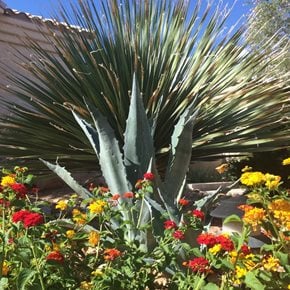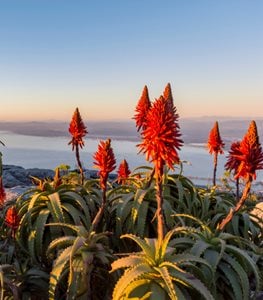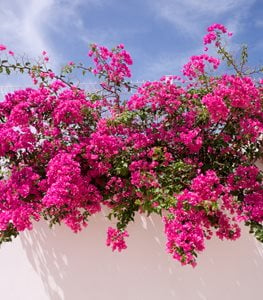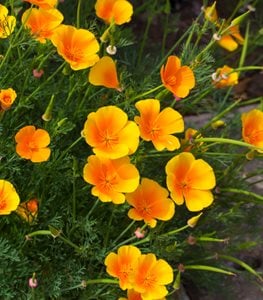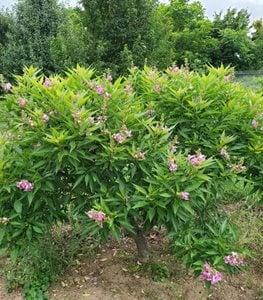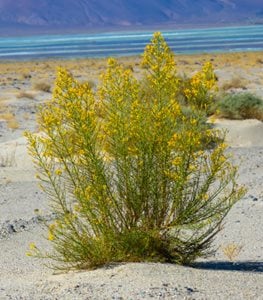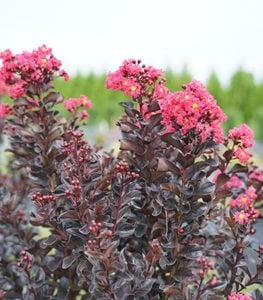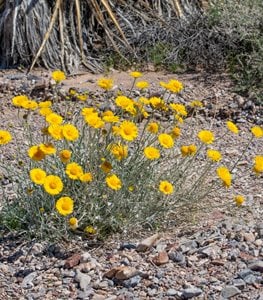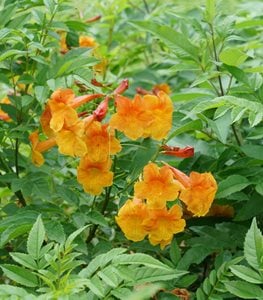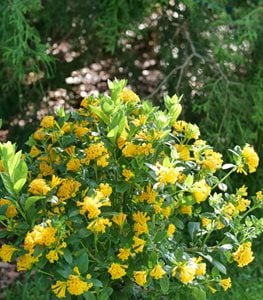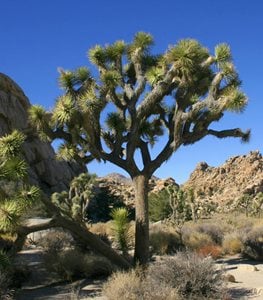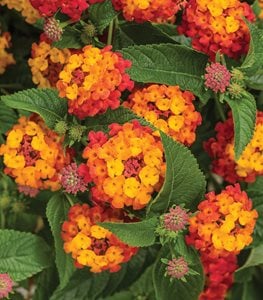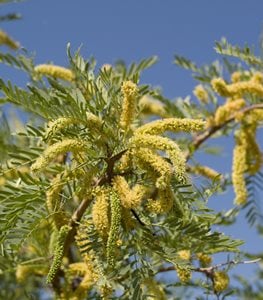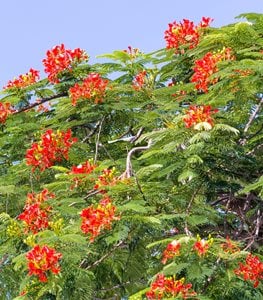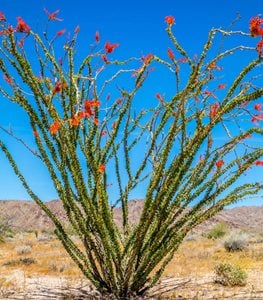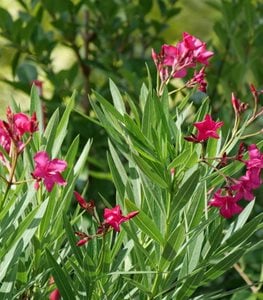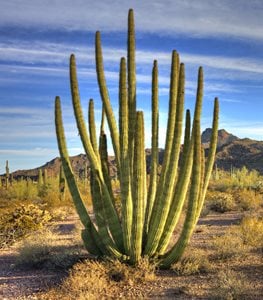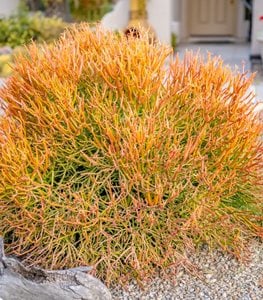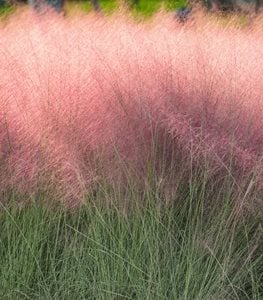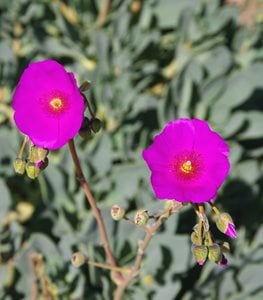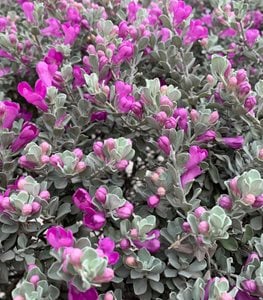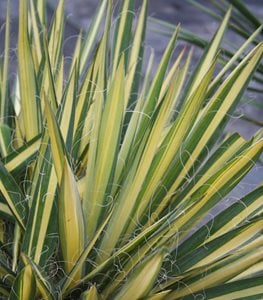25 Desert Plants for Arid Landscapes
Grow these plants that are adapted to hot, dry, desert conditionsLiving in a dry desert climate doesn’t mean you can’t have a beautiful landscape. While desert landscapes don’t have the lush green appearance of a woodland garden, they have a pleasing visual appeal of their own. Many desert plants have interesting foliage, flowers, texture, structure, and multi-seasonal interest, traits that combine to create a captivating landscape.
Desert growing environments are harsh and unforgiving, with hot temperatures, scarce water, and lean, rocky soil. Native plants have evolved to withstand these conditions, needing little rainfall or nourishment to survive.
Cacti and succulents have adapted with the ability to store water in their leaves, stems, and roots. Some plants such as mesquite, creosote bush, and yucca have deep root systems that burrow into the soil in search of water.
Other adaptations include a waxy leaf coating, smaller leaves, spines, or thorns to reduce water loss through transpiration; silver colored foliage to reflect the sun; and long sharp leaves that trap moisture from rainstorms.
By incorporating a mix of plant types including trees, shrubs, cacti, succulents, and perennials, you can create an engaging desert garden that is drought tolerant and low maintenance. Here are some of the best desert landscape plants to grow.
Read more: Desert Landscaping: Transform Your Yard with Natural Beauty
PLANTS FOR DESERT LANDSCAPES
AGAVE (Agave spp.)
Zones: 5-11
Exposure: Full sun
Habit: Upright or mounding spiky habit
Height/Spread: 1 to 20 feet tall, 1 to 10 feet wide, depending on the variety
Bloom time: Varies; most bloom just once before dying
Agave is a succulent with stiff pointy leaves and a symmetrical spiky habit that adds architectural interest to the landscape. There are more than 250 species in a wide range of sizes and foliage colors including green, gray, blue, and variegated. Use as a focal point in a container, in beds or strips, or massed in the landscape. Learn more about growing agave plants.
ALOE (Aloe spp.)
Zones: 7-12, depending on the variety
Exposure: Full sun
Habit: Upright or mounding spiky habit
Height/Spread: 6 inches to 30 feet tall, 6 inches to 20 feet wide
Bloom time: Year-round, depending on the variety
Native to warmer regions across the globe, Aloe are evergreen succulents with spiky fleshy leaves. There are 650 species in a wide range of sizes and colors, from tree forms to miniature specimens. Plants produce torch-like flowers, most often in winter. Add structure and color to containers and beds, or use as a focal point in the landscape. Aloe can also be grown as a houseplant. Learn more about growing aloe.
BOUGAINVILLEA (Bougainvillea spp.)
Zones: 9-11
Exposure: Full sun
Habit: Vining spreading habit
Height/Spread: 3 to 30 feet tall and wide
Bloom time: Summer, with nearly year-round bloom in warmer climates
Bougainvillea is one of the most common desert shrubs, grown for the vivid flower bracts that occur in shades of pink, red, magenta, orange, and white. With nearly year-round color in warmer climates, this versatile vining shrub can be trained on trellises, allowed to sprawl as a ground cover, or to spill over walls. Bougainvillea can also be grown in containers and overwintered indoors in colder climates. Learn more about growing bougainvillea.
CALIFORNIA POPPY (Eschscholzia californica)
Zones: 6-10
Exposure: Full sun
Habit: Mounding habit
Height/Spread: 12 to 18 inches tall and wide
Bloom time: Spring to summer
California poppy produces ferny foliage and cup-shaped flowers in hues of orange, yellow, white, pink, or purple. Native to the U.S. and Mexico, this short-lived perennial is most often grown as an annual, and may reseed from year to year. Naturalize in a rock garden, xeriscape, curbside planting, or along a slope.
EL NINO™ DESERT ORCHID (Chitalpa hybrid)
Zones: 6-9
Exposure: Full to partial sun
Habit: Bushy spreading habit
Height/Spread: 5 to 8 feet tall, 4 to 6 feet wide
Bloom time: Summer
Chitalpa is a hybrid cross between Chilopsis (desert willow) and Catalpa, which are both native to North America. Clusters of fragrant pink flowers similar to orchids or snapdragons appear from late spring to early summer, with sporadic rebloom. Grow this easy-care shrub in beds, borders, or containers.
Pictured: El Nino™ Desert Orchid from Proven Winners.
"This gorgeous plant grew really well in a container for us. We both loved its beautiful, frilly flowers and its progression of flowers blooming from bottom to top. The pollinators loved it too!" — Sean & Allison, Spoken Garden
CREOSOTE BUSH (Larrea tridentata)
Zones: 7-11
Exposure: Full sun to partial shade
Habit: Upright bushy habit
Height/Spread: 4 to 8 feet tall and wide
Bloom time: Year-round
Creosote bush is an evergreen shrub with small green leaves and bright yellow flowers that are followed by white fluffy seed heads. Native to the Sonoran Desert, Mojave Desert, and Chihuahuan Desert, this tough plant is tolerant of heat, drought, and poor soils. The open graceful habit is useful as a background element in a mixed border or xeriscape.
CENTER STAGE® PINK CRAPE MYRTLE (Lagerstroemia indica)
Zones: 6-10
Exposure: Full sun
Habit: Upright bushy habit
Height/Spread: 6 to 12 feet tall, 8 feet wide
Bloom time: Summer
Center Stage® crape myrtle is a deciduous tree or shrub with dark burgundy-black foliage that provides a stunning backdrop to the hot pink flowers. The smaller stature is suitable for small urban lots and containers. Use as an attractive focal point or in mass plantings. Learn more about growing crape myrtle.
Pictured: Center Stage® Pink crape myrtle from Proven Winners.
DESERT MARIGOLD (Baileya multiradiata)
Zones: 7-10
Exposure: Full sun
Habit: Upright spreading habit
Height/Spread: 1 to 2 feet tall, 2 to 3 feet wide
Bloom time: Spring to fall
This annual, biennial, or short-lived perennial produces silver-green foliage and cheerful yellow flowers that resemble marigolds. Plants bloom over an exceptionally long period, from late spring to fall. Use this Southwest native wildflower as a filler plant in rock gardens, beds, and curbside strips.
CHICKLET® ORANGE ESPERANZA (Tecoma hybrid)
Zones: 8-11
Exposure: Full sun
Habit: Compact bushy habit
Height/Spread: 3 to 6 feet tall, 2 to 4 feet wide
Bloom time: Summer
This deciduous shrub produces deeply lobed leaves and clusters of orange trumpet-shaped flowers that are appealing to butterflies and hummingbirds. The compact size is suitable for small spaces and containers. Use as an attractive focal point or in a mixed border. Learn more about growing esperanza plants.
Pictured: Chicklet® Orange esperanza from Proven Winners.
ESTRELLITA LITTLE STAR® FIRECRACKER BUSH (Bouvardia hybrid)
Zones: 8-10
Exposure: Full to partial sun
Habit: Compact bushy habit
Height/Spread: 18 to 24 inches tall and wide
Bloom time: Summer
Showy clusters of trumpet-shaped flowers occur in warm tropical hues of red, orange, and hot pink. A favorite of hummingbirds, this long-blooming deciduous shrub has a compact habit that is versatile in containers, mass plantings, perennial, and shrub borders. Learn more about growing bouvardia plants.
Pictured: Estrellita Little Star® firecracker bush from Proven Winners.
JUICED™ ORANGE JESSAMINE (Cestrum corymbosum)
Zones: 7-10
Exposure: Full to partial sun
Habit: Upright bushy habit
Height/Spread: 4 to 5 feet tall, 3 to 4 feet wide
Bloom time: Spring to summer
Clusters of creamy orange tubular flowers are a magnet for hummingbirds and butterflies. This long blooming evergreen shrub, which is tolerant of heat and drought, adds color and fragrance to foundation plantings, borders, and containers.
Pictured: Juiced™ Orange Jessamine from Proven Winners.
JOSHUA TREE (Yucca brevifolia)
Zones: 6-10
Exposure: Full sun
Habit: Upright branching habit
Height/Spread: 15 to 30 feet tall and wide
Bloom time: Spring
Joshua tree is an iconic plant native to the Mohave Desert and other parts of the southwestern U.S. This slow-growing evergreen succulent has a stout tree-like trunk, open branching, and spiky green leaves at the tips. The unique architectural structure makes a compelling focal point in the landscape.
LANTANA (Lantana spp.)
Zones: 9-11, also grown as an annual
Exposure: Full sun
Habit: Upright, bushy, spreading, or ground cover habit
Height/Spread: 2 to 6 feet tall, 3 to 10 feet wide
Bloom time: Late spring through frost, or nearly year-round in warmer climates
This bushy evergreen shrub is grown for the tropical-hued flower clusters that are a magnet for hummingbirds, butterflies, and other insect pollinators. Blooming nearly year-round in milder climates, this verbena relative is commonly grown as an annual or overwintered indoors in milder climates. Grow in a container, foundation planting, as hedging or a groundcover, or massed in the landscape. Learn more about growing lantana.
Pictured: Luscious® Citrus Blend™ lantana from Proven Winners.
LITTLE BLUESTEM (Schizachyrium scoparium)
Zones: 3-9
Exposure: Full sun
Habit: Upright habit
Height/Spread: 2 to 4 feet tall, 1 to 2 feet wide
Bloom time: Late summer to fall
Little bluestem is an ornamental grass native to North American prairies. The finely textured blue-green foliage turns tawny brown, with airy seed heads that appear in late summer. This carefree perennial adds graceful movement and multi-seasonal interest to mixed borders, meadow gardens, and mass plantings. Learn more about growing little bluestem.
Pictured: Prairie Winds® 'Blue Paradise' little bluestem from Proven Winners.
MESQUITE (Prosopis spp.)
Zones: 7-11
Exposure: Full sun
Habit: Upright bushy habit
Height/Spread: 8 to 50 feet tall, 8 to 30 feet wide
Bloom time: Spring to summer
This shrubby deciduous tree is native to dry regions of the southwestern U.S. The thorny branches produce ferny foliage and bottle brush flowers that are followed by dangling pea-like pods. Plants are well-adapted to dry climates with a deep taproot system. Use as a background element to add texture to the landscape.
MEXICAN BIRD OF PARADISE (Caesalpinia pulcherrima)
Zones: 9-11
Exposure: Full sun
Habit: Upright bushy habit
Height/Spread: 10 to 12 feet tall, 6 to 20 feet wide
Bloom time: Summer to fall
Mexican bird of paradise is an evergreen shrub or small tree that produces thorny foliage and clusters of orange-red flowers. The showy blooms, which are especially attractive to butterflies and hummingbirds, are followed by curly seed pods. Its smaller stature is suitable for small urban lots. Use as a background element or focal point in the landscape. (It is toxic to dogs and cats.)
OCOTILLO (Fouquieria splendens)
Zones: 8-11
Exposure: Full sun
Habit: Upright habit
Height/Spread: 8 to 20 feet tall, 5 to 10 feet wide
Bloom time: Spring
Ocotillo is a shrubby succulent native to the southwestern U.S. Plants have an elegant vase-shaped habit, with long stems that emerge from the base. Ocotillo survives prolonged dry spells by shedding its small fleshy green leaves and going dormant. Bright red flowers that appear in spring are highly attractive to hummingbirds and butterflies. Use as a structural element or focal point in the landscape.
OLEANDER (Nerium oleander)
Zones: 8-11
Exposure: Full sun
Habit: Upright bushy habit
Height/Spread: 4 ot 20 feet tall, 3 to 15 feet wide
Bloom time: Year-round, with peak bloom during warmer months
A widely used landscape shrub in warmer climates, Oleander is grown for its long-blooming star-shaped flowers and tough carefree nature. This Mediterranean native can be grown in home landscapes, but care must be taken due to its toxicity. Use in a foundation planting, waterwise strips, or mass along a slope to stem erosion. Learn more about growing oleander shrubs.
Pictured: Austin Pretty Limits® oleander from Proven Winners.
ORGAN PIPE CACTUS (Stenocereus thurberi)
Zones: 9-11
Exposure: Full sun
Habit: Upright columnar habit
Height/Spread: 15 to 20 feet tall, 10 to 12 feet wide
Bloom time: Spring to summer
Organ pipe cactus, which is native to the desert Southwest, produces 5 to 20 trunks that emerge from the base. The gray-green stems with vertical ribs and brown spines resemble organ pipes. Night blooming white flowers are followed by edible fruits. The distinctive structure makes a stunning focal point in a rock garden or xeriscape.
PENCIL CACTUS (Euphorbia tirucalli)
Zones: 11-12
Exposure: Full sun
Habit: Upright branching habit
Height/Spread: 20 to 30 feet tall, 6 to 10 feet wide
Bloom time: Spring to summer
Also known as fire sticks, this evergreen succulent shrub produces pencil-like stems on branching plants that resemble sea coral. Native to southern Africa and Indonesia, the green branches may acquire warm hues of red, yellow, and coral at the tips, hence the name fire sticks. The sculptural appearance adds vertical interest to xeriscapes, rock gardens, and containers.
PINK MUHLY GRASS (Muhlenbergia capillaris)
Zones: 6-9
Exposure: Full sun to partial shade
Habit: Upright mounding habit
Height/Spread: 2 to 3 feet tall and wide
Bloom time: Late summer to fall
Native to the eastern U.S., this warm-season ornamental grass is grown for the pink seed heads that form a billowy cotton candy effect. The seed heads fade to tan for long-lasting winter interest. Mass in a dry border or native garden to add drifts of soft texture, movement, and color.
PRICKLY PEAR CACTUS (Opuntia spp.)
Zones: 4-11
Exposure: Full sun
Habit: Upright, spreading habit
Height/Spread: 1 to 15 feet tall and wide, depending on the variety
Bloom time: Summer
Globe-shaped flowers, which are actually colored leaf bracts, bloom over a long period of time to support a wide range of bees and butterflies, including skippers. Learn more about growing prickly pear cactus.
ROCK PURSLANE (Calandrinia grandiflora syn. Cistanthe grandiflora)
Zones: 9-11
Exposure: Full sun to partial shade
Habit: Upright spreading habit
Height/Spread: 1 to 3 feet tall, 2 to 3 feet wide
Bloom time: Spring to fall
Native to Chile, rock purslane is a perennial succulent with fleshy gray-green leaves and cup-shaped magenta flowers that grow on long thin stems above the foliage. Flowers bloom over an exceptionally long time, from spring to fall. Mass as a ground cover along a foundation, at the front of a border, or as edging.
TEXAS SAGE (Leucophyllum frutescens)
Zones: 8-10
Exposure: Full sun
Habit: Upright bushy habit
Height/Spread: 5 to 8 feet tall, 4 to 6 feet wide
Bloom time: Summer to fall
This evergreen shrub, native to Texas, is a common landscape plant grown for the soft silvery foliage and tubular rose-purple flowers, which typically appear after it rains. Use as a background element in beds and borders, in foundation plantings, as hedging or screening.
YUCCA (Yucca spp.)
Zones: 4-11, depending on the variety
Exposure: Full sun
Habit: Upright spiky habit
Height/Spread: 2 to 30 feet tall, 2 to 25 feet wide
Bloom time: Spring to summer
Also known as Spanish bayonet, yucca is a diverse group of perennial trees and shrubs native to the Americas and Caribbean region. This succulent forms symmetrical rosettes of lance-shaped green, gray or variegated foliage, producing showy white flower spikes in spring or summer. Use as a focal point in containers, rock gardens and beds, or mass in the landscape. Learn more about growing yucca plants.
Pictured: Color Guard yucca from Proven Winners.
RELATED:
Desert Garden Ideas
Rock Garden Ideas, Design, and Plants
Drought-Tolerant Landscaping
15 Popular Types of Succulents


